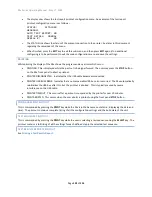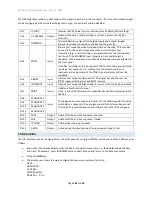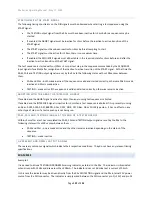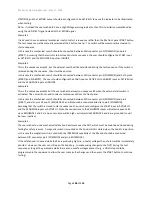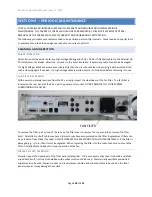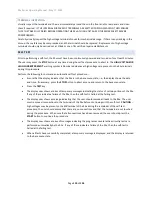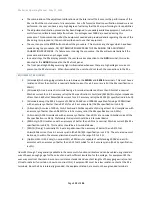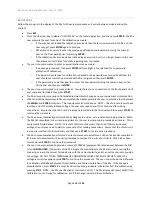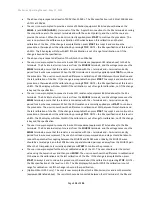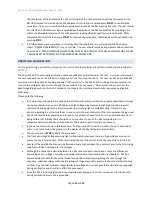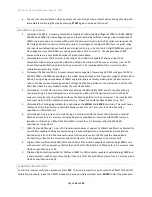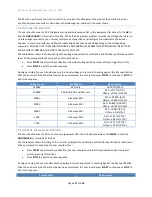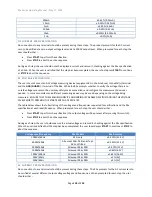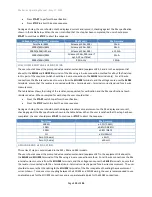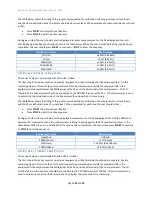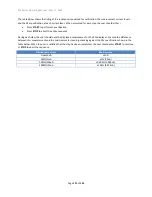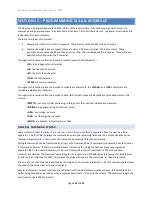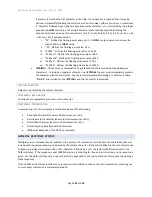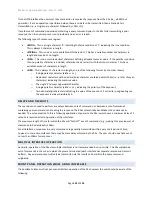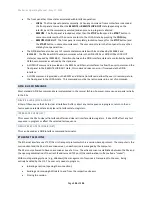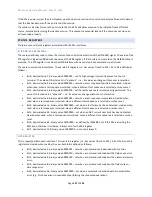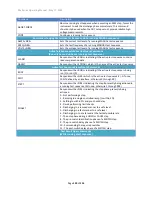
95x Series Operating Manual - May 17, 2022
Page
116
of
155
•
The user can skip verification steps by simply not connecting a measurement device during that step and
immediately continuing the step by pressing
START
again to proceed to the next.
EQUIPMENT REQUIRED
1.
(All except the 959i). A measurement device capable of measuring DC voltages of 100V to 1000V, 6000V,
10000V and 14000V (actual voltages depend on the model being verified), having an input impedance of
10M
Ω
or greater, and an accuracy which yields the desired error ratio to the 95x series accuracy (see the
DC Voltage Verification portion for the accuracies). At voltages at or below 1000V there is a great range
of products available which easily achieve very high ratios (e.g., a bench-top 6 ½ digit DMM has a typical
DC voltage accuracy of ±0.005%, producing more than a 50:1 error ratio). At voltages above 1000V
however there are a very limited number of products available.
2.
(All models) A source of DC currents in the range 1uA to 50mAdc capable of driving at least 1.5V
compliance with an accuracy which yields the desired error ratio to the 95x series accuracy (see the DC
Current Scaling Verification portion for the accuracies). This is achievable with most multi-function
calibration products (e.g., Fluke).
3.
(All except the 956i and 959i). A measurement device capable of measuring AC RMS voltages of 100V to
1900V, 6000V or 10000V (depending on the model being verified), with a frequency range of at least 60 to
400Hz, having an input impedance of 10M
Ω
or greater, and an accuracy which yields the desired error
ratio to the 95x series accuracy (see the AC Voltage Verification portion for the accuracies). At all but the
100V level there is a very limited number of products available.
4.
(All models). A set of DC resistance standards of values 100K
Ω
, 10K
Ω
, 100
Ω
and 1
Ω
, capable of being
connected using a 4-wire configuration, and accuracies which yield the desired error ratio to the 95x
series accuracy (see the Low Ohms Resistance Verification portion for the accuracies). This is achievable
with most multi-function calibration products (e.g., Fluke) or Resistance Decade Boxes (e.g., ESI).
5.
(All models) A shorting plug suitable for use between the
SENSE+
and
SENSE-
terminals. This must have a
resistance of less than 5m
Ω
at a nominal 30mAdc current for a 4:1 accuracy ratio (the 95x series
specification is 20milliohms).
6.
(All models) A true 4-wire short circuit having a 4-terminal resistance of less than 0.5m
Ω
at a nominal
30mAdc current for a 4:1 accuracy ratio (the 95x series specification is 2m
Ω
) and (952i/4i/9i only) an
impedance of less than 1.625u
Ω
at 5Arms/60Hz current for a 4:1 accuracy ratio (the 952i/4i/9i
specification is 6.5uOhm).
7.
(952i, 954i and 959i only). A set of AC resistance standards of values 1
Ω
, 100m
Ω
and 50m
Ω
, calibrated for
use at 60Hz, capable of being connected using a 4-wire configuration, and accuracies which yield the
desired error ratio to the 95x series accuracy at the currents used in the 95x (see the Ground Bond
Verification portion for the accuracies and current levels). These may have to be custom built.
8.
(Option HSS only) Nominal 100K
Ω
, 1M
Ω and 10MΩ
± 20% resistors capable of withstanding 1000V and a
milli-ammeter with an accuracy of better than ±0.25% at 100uA, 1mA and 10mAdc for a 4:1 accuracy ratio
(the 95x specification is ±1%).
9.
(Option HSS-2 only) Nominal 1M
Ω
, 10M
Ω and 100MΩ
± 20% resistors capable of withstanding 1000V and
a micro-ammeter with an accuracy of better than ±0.25% at 10uA, 100uA and 1mA for a 4:1 accuracy ratio
(the 95x specification is ±1%).
STARTING VERIFICATION
To start the internal verification procedure press
EXT
. The user prompts the user to select the VERIFY (or ADJUST)
calibration procedure. Since the VERIFY procedure is always initially selected, press
ENTER
to start the procedure.

